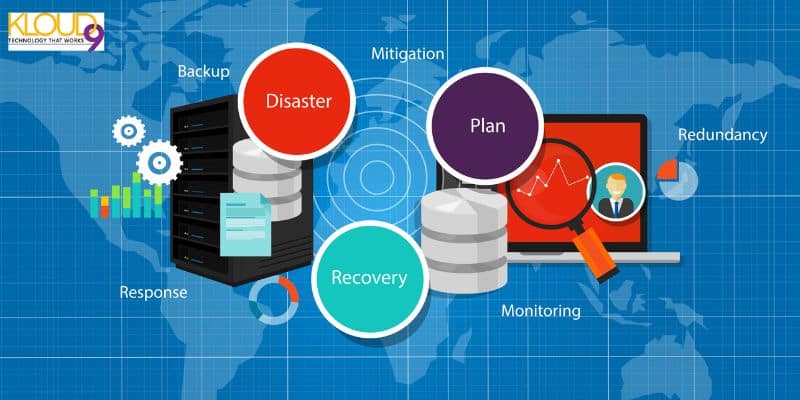Specific emergencies can happen beyond your control. They can be in extreme weather crises or any other disaster that causes severe damage. Whatever the case, you need to prepare ahead for these problems if you want your business to thrive.
According to a report by FEMA1, about 90% of small-scale businesses that encounter disaster crises might fold up within one year if they fail to continue operations within a few days of the crisis.
With this, it would be best to have an unwavering disaster recovery plan, especially if your business is still crawling. If you have a small, medium, or large-sized business, here are eight tips that have proven effective for data recovery during a disaster.
What Are the Relevant Tips for an IT Recovery Plan?
Disaster can come in different forms, such as earthquakes, malicious attacks, hurricanes, or any human error that improves vulnerabilities. These destructive problems do not spare the size of your business, so you must plan to withstand them. Since you might fall victim to a systematic disaster, you should know the following tips at the tip of your finger:
1. Identify and Assess Potential Risk
Know all risks that might affect your business, and invent a means to solve them. Ensure that you place all risks at the same level, from malware and other cyber threats to hurricanes, tornados, human error, and power outages. You should look for more risks and add them to the list, as the most uncommon risk can be just as damaging as the popular one.
Research can help you identify potential risks. Therefore, remain guided by searching for proven studies to help you identify what might seem like a looming danger. Additionally, you must be intensive in your business and consider your geographical location since it can contribute to your technology.
2. Prioritize Your Business Demands
Putting your business needs at the front line helps you know more about looming risks and the chances you have of recovering from the consequences of such risks. In comparison, many kinds of disasters can affect the core areas of your business, such as regulations, general safety, financial principles, reputation, and operations.
Develop a ranking list by prioritizing each area according to its relevance so that you can know which one you should address first. You should also have in mind that it is necessary to carry out regular risk evaluation as doing so helps you respond to threats as quickly as possible. Having prioritized your company's needs, your IT management security and recovery team can easily deal with problems in areas demanding their attention.
3. Set Up Your IT Recovery Team
During a disaster challenge, you and your employees might do everything you can to manage the situation. While this zealous action is wonderful, you need more than enthusiasm to fight disaster occurrence as recovery demands organized, thoughtful, and collaborative effort.
Please set up a recovery team while anticipating impending risk by creating employee roles based on their experience and essential skills. When you share roles with employees, you leave them with the task of identifying threats and pushing them to act responsibly and proactively.
Having a recovery team in your workplace helps reduce downtime influence and improves in-house speed. You can appoint someone to impart information to the team during and after a disaster. Each team member should learn to be accountable, communicative, and transparent during recovery, to help save resources and time.
4. Develop a Plan to Keep Up with Your Business Progress
No matter how small the size of your business, if you have just experienced a disaster, you must keep up with your duty to customers. Plan for continuity to solutions, procedures, and processes. Ensure that you pass consistent information to your customers and serve them as usual.
5. Create Payroll and Emergency Financing
A recovery plan should include paying bills, as employees need their paychecks. You can use third-party or cloud-based options to ensure that your accounting operations continue.
Deliberate on this MSP scenario where a company's data analyst conquered disaster challenges and helped customers attacked by hurricanes to establish and offer on-time payroll to prevent business from halting.
6. Run Drills
Consistently run drills for a disaster recovery plan to ensure that you handle crises perfectly when you come face to face with them. Since you might need more than a recovery plan, protect yourself with adequate recovery tools and remain confident, knowing that you can recover your data effectively at the end of the day.
You can utilize scheduled drills to permit your recovery team to get on with procedural tasks at the workplace. They can also run drills to pinpoint relevant notifications. But, it should be scheduled as unplanned drills increase pressure. Provide employee empowerment using drills, and prioritize them to help you withstand cyber attacks on your business data.
7. Implement an Update
After changing locations, applications, and personnel during data recovery, you should also update your plan and have new regulations as evidence. Also, determine if the change can influence your prepared disaster recovery plan when approving updated solutions. Since an attack is inevitable, prioritize system updates for all the changes you make in your business network.
8. Set Up an In-Built Backup
In-built backup solutions can be a cloud-based Disaster Recovery Service or a DRaaS. This service can help your business by ensuring effective and speedy disaster recovery solutions. It is an IT service with maximum security relevance. However, it would help if you used a DRaaS that you can rely upon. It must also have an approvable and reputable cloud provider to help you manage your clients.
Conclusion
Having a disaster recovery plan is something you must develop to prepare against different kinds of IT security and system threats. Emergency recovery can help you deal with any storm, but you must be proactive to withstand them. Also, having a risk recovery plan can help you get back to business rather than put a halt to it.





You must be logged in to post a comment.